How can I get people to stop talking about our decision to homeschool?
The first rule of defending your homeschool decisions is also the most liberating: You have no obligation to justify or explain yourself to anyone who isn’t your co-parent. Period.
The first rule of defending your homeschool decisions is also the most liberating: You have no obligation to justify or explain yourself to anyone who isn’t your co-parent. Period.
We have decided to homeschool our 9-year-old this year, and I’m really excited. But everybody seems to have an opinion about it. My mom. Our neighbors. The lady behind me in the checkout line at the supermarket. No one ever asked questions or second-guessed our decision to send him to public school, but everybody seems to want to weigh in our decision to homeschool. I feel good about our decision, but the constant questioning is really weighing me down.
I feel like homeschooling is right up there with being pregnant when it comes to people thinking that things that are clearly Your Business are suddenly Everybody’s Business. And while it’s nice to celebrate the whole it-takes-a-village piece of it, it is incredibly frustrating to feel like you’re constantly defending a decision that you have every right to make. It’s insulting — do they really think you have just spontaneously made this huge decision about your child’s life on the fly with no real thought or consideration? — and it’s stressful — you’re already worried about finding the right resources and making it all work without other people trying to add more worries to your pot.
The first rule of defending your parenting decisions is also the most liberating: You have no obligation to justify or explain yourself to anyone. Period. A stranger at the supermarket? A random parent on the playground? You can pull out my grandmother’s go-to response to nosy people, and just say, “What an odd thing to say/ask.” The key to this isn't the words, it's the uncomfortably long pause afterwards that you don't try to fill, where you just look at them as though you’re trying to understand this incredibly strange behavior that you don’t know how to respond to. Usually this awkwardness is enough to change the subject, but if it’s not, you can say, flatly, “It’s weird that you’re trying to insert yourself into my parenting decisions. Please stop.” Resist the urge to explain your thinking, cite your sources, or otherwise justify yourself — give yourself permission to just say, “I’m not explaining this to you because it’s none of your business."
Of course, there are people whose opinions matter to you — your mom, your favorite carpool friend, your nice neighbor. In these instances, you still don’t need to justify your decision, but you want to remind the person in question that (1) this is your choice to make, not theirs and (2) you have put a lot more thought into making this decision than they have put into questioning it. A good script is something like: “I know you’re surprised/concerned by this choice, but I know you also know how much I love Liam and want to do the right thing for him as his parent. Trust me: I feel really good about homeschooling, and I’d like your support.” If they keep pushing, you can just say, “Ultimately, I feel good about this decision, and I’m not going to change my mind. I’d like your support. Can you give it to me?” If the answer is any form of no, you can say, “OK, I hear you — but I’m done discussing this, so let’s talk about something else.” With some people, you may have to go even further, and say, “I can tell you need to talk about this, but I am not the person you need to talk to. Do you need me to give you some space to process this? Or can we talk about other things?”
I think we have a tendency to want to smooth things over, to want to explain ourselves to people because we want to be understood. But we can’t always get that in conversations about homeschooling — instead, we can get pulled into a cycle of feeling that we’re always justifying our decision. That’s not our job, though! We owe ourselves and our children careful, thoughtful decision-making, but we don’t owe that to anyone else, and it’s OK to take a (polite) step back and refuse to engage.
How to Transform the Homeschool You Have into the Homeschool You Really Want
You can turn the homeschool you have right now into the homeschool of your dreams. You just need clear vision, a little imagination, and a plan.
If you’ve ever felt like the homeschool you really want just isn’t happening, I have good news: You have the power to change your homeschool for the happier. All you need is a clear vision of where you are now, a little imagination, and a plan for moving forward.
1 : Understand What You Really Want
The first step to getting what you want is knowing what you really want. That sounds simple, but this is where people often get hung up on vague ideas or not-quite-thought-out scenarios.
How do you want your homeschool to feel? What do you want it to accomplish? Life coach Erin Michaelson recommends borrowing a trick from the home decorating world and creating an inspiration board for your homeschool.
“Choose images and words that reflect the way you want your homeschool to feel,” says Michaels. “Don’t overthink it — just grab the images that appeal to you and start pinning them on a wall or Pinterest board.”
Your dream board may look different from what you imagined — maybe you had visions of a nature-centered Waldorf environment, but all your pictures are of cozy book nooks. That’s okay, says Michaelson. “Often, we don’t know exactly what we’re looking for until we start to pin it down. Sometimes, that disconnect can make us feel permanently dissatisfied because we haven’t taken the time to understand what we really want — we’re working toward the wrong things and trying to figure out why we’re so unhappy.”
Really focus on what you want — not on what seems affordable, or reasonable, or doable in your current situation.This is your chance to dream big.
2 : Know Where You Are
You need to know where you are before you can figure out how to go anywhere.
You probably spend a lot of time thinking about what you’d like your homeschool to be, but it’s equally important to understand where you are. Start another inspiration board to capture your current homeschool life: What is a typical day like? What do you do all day? How do you feel? How does your day look?
Find words and pictures that reflect your homeschool as it actually is right now —and be honest. There will probably be good parts and parts that aren’t so photogenic — that’s okay. Go ahead and include what feels true, which may include messes and arguments, unfinished projects and kids playing video games all day. This is where you are, and it’s essential to have a clear picture of where exactly that is.
You probably have a clear idea of the things that aren’t going right, and that’s part of this project. But don’t neglect the things that are working for you, whether it’s little things like finally finding the perfect pencil sharpener or bigger-picture things like figuring out the right bedtime routine. Here are some things to consider:
Curriculum
Think both about the curriculum you are using and the subjects where you aren’t using curriculum. What’s working? What isn’t? What’s getting done, and what’s perpetually on your yeah-I-should-really-get-around- to-that list? What do your kids look forward to, and what do they dread?
Routine
What do your mornings look like? How do your aernoons feel? How do your days wind up? Pay attention to the parts of your routine that work really well and to the parts that aren’t really working. When do you feel the happiest? When is everyone the most productive? Definitely consider the parts of your day that fall under the traditional homeschool umbrella — the times when you are learning or working in focused ways — but give attention to the rest of your day, too, which is an important part of your family’s regular routine.
Yourself
This is one of those things that you might not usually give a lot of your energy to thinking about, but how you feel about yourself can play an important role in your homeschool. How do you feel during the day? What do you look like? What’s the first thing you think about in the morning and the last thing on your mind before you go to sleep? Sometimes, it’s not your homeschool that’s the problem — it’s you. Months or years of concentrated, non-stop effort without a break can slowly erode your patience, your immune system, and your overall happiness. If you suspect that you’re just plain worn out — not an uncommon problem for homeschool parents! — take a mini vacation to clear your head before you decide to change anything.
3 : What’s Missing?
Here’s where things get fun: You’re going to plot a course to start transforming the homeschool you have right now into the homeschool you really want.
A lot of inspiration boards start and end with step one, but to really start to make your happiest homeschool come to life, keep going. Create a follow-up dream board for each of the important elements in your main inspiration board.
For example, if you collected lots of photos of happy families making art in a sunny room but art is always getting shoved off your to-do list, start a list called “Let’s Do Art.” Start adding images of what you imagine your ideal art home- school would look like — cool pictures and projects, a big table, great art supplies, a gallery wall running up your staircase, etc. Do this for all the repeated images that you put together in step one: Maybe you’ll have a page for field trips or carschooling, a page for a super-organized homeschool room, or a page full of nature activities. You might have a page of a happy, well-adjusted student settling into college life or a page of mom outfits that don’t involve yoga pants — anything that you pinned to your dream board more than once should get fleshed out with more images and details. Don’t try to convince yourself that anything is unimportant or unnecessary — you may end up needing to set priorities down the road, but this is not that time. It’s okay if this process takes a while, too — there’s no need to rush.
“It’s tempting to jump right into thinking about what you need to do to get from Point A to Point B, but it’s important to really give yourself room to explore the Point B you want to reach,” says Michaelson. “Pretend that you have all the money/time/ space/whatever in the world: What does this particular thing you want look like?”
4 : Let Go
Just as it makes sense to hone in on the specifics of what you really want, it’s important to spend some time considering the parts of your current life that you’d like to change.
Make a page for each thing that’s not working: A schedule that feels too hectic, arguing kids, a perpetual mess, that permanently frazzled feeling you have at the end of every week — whatever it is that’s making your homeschool feel stressful or boring or unhappy. Collect images and ideas for changing these difficult moments: You may want to search for ideas online or in magazines or ask friends for advice about strategies that have worked for them.
“A lot of times, we get so caught up in trying to figure out what’s causing a problem that we never actually address the problem,” says Joshua Holland, a career advisor who specializes in helping people align their career paths with their passions. “Sometimes, though, your time is better spent moving forward in a productive way.”
Instead of wondering why your kids grouch out over morning math or why you fall apart every night after park day, think about what you might be able to do differently to change that problem part of your day. Knowing what you want to avoid is just as important as knowing what you want to concentrate on.
5 : Collect Supplies
Only now is it time to start actually making changes — and that’s because now you know what you really want and how to get it.
You can start with adding things you want or with trying to erase things that you aren’t happy with, but it’s usually more fun — and maybe more straightforward — to begin with adding something new. For example, if your wish-list includes more nature time, you might start by checking out a stack of nature guides from the library to familiarize yourself with local plants and wildlife or sign up for a naturalist-led hike at a nature center. Start spending more un- structured time in the backyard, or set up a bird feeder near the window. Add a daily nature sketch to your journal or challenge your- self to take a nature photo every day. Your goal here isn’t to jump in with a new curriculum or a structured plan of study; instead, you want to incorporate your new experience into your life. Once it feels like it fits naturally into your routine, you may want to look for a curriculum or classes, but for now, you just want to get comfortable.
“Give yourself space to figure out how this thing you want for your homeschool fits into your actual life without the pressure of spending lots of money or time on a curriculum,” says Michelson. In other words, don’t be tempted by quick-and-easy solutions: Some things you will try during this time will be revelatory — they may change your homeschool forever and for the better — but many will just be okay and some will be total failures. Commitment is the last thing you want right now — the thing you need is freedom to figure out what works and what doesn’t.
Follow the same procedure to change the things that don’t work. Try earlier bedtimes or saving math until after lunch if you feel frazzled. Sort and toss artwork every week to minimize clutter, or set up a specific shelf for library books so they don’t get lost. Experiment with lots of small, different things to find the ones that work for you.
6 : Move Forward
The process of creating your ideal homeschool is an ongoing one. Every year, the rhythms and needs of your homeschool will change, and you’ll begin this process all over again.
In other words, this is a continuous process, so keep updating your dream boards as your experiences dictate: Maybe free access to all the art materials got too messy, and art study works better one medium at a time. Pull those overstocked art cabinets off your inspiration board and replace them with station-style art storage. Maybe school outside is distracting, and it makes more sense for your family to do hands-on learning inside. Update your dream board with photos of attractive learning spaces. You may find that the more you focus on reading aloud, the better your homeschool works — add more pictures of books and reading to your dream board. Images and ideas will go up and come down — that’s totally normal. Your homeschool is a work in progress.
You can also update your real homeschool board as you find things that work for you: Add that great science curriculum or the writing program that really worked. Add the covers of books you’ve read together and loved or posters from movies that had an impact on your homeschool. Take photos of your own happy, smiling kids to paste on your board, or add tickets from movies, museums, and concerts.
Let the board of your homeschool life gradually evolve to reflect your dream homeschool.
4 Easy, Effective Ways to Plan Your Homeschool Year
Whether you’re a new homeschooler not sure how to get started or an experienced homeschooler looking for a little planning inspiration, these simple strategies will help you get organized for the learning year ahead.
Whether you’re a new homeschooler not sure how to get started or an experienced homeschooler looking for a little planning inspiration, these simple strategies will help you get your secular homeschool organized for the learning year ahead.
Have a student-teacher conference.
Include your kids in the planning process. When kids are active participants in homeschool planning, they take on some responsibility for their own educations and take more pride in their accomplishments.
Start an end-of-the-year homeschool tradition hanging out together at coffee shop or diner to conduct a post mortem of the school year. Which curriculum did your child like or not like — and why? Which publishers’ texts would he like to use again? What area of study is he most interested in exploring further? If you have multiple kids, try to make time for a separate sit-down with each one.
This simple homeschool tradition can give you direction and focus when planning the next year. It can be helpful to bring a list of classes and activities to consult during your conversation — it’s easy to forget things that happened in your homeschool back in October after your second mint-chocolate-chip frappe.
Host a homeschool planning party.
Invite a few homeschooling friends over for a casual secular homeschool curriculum party. Keep it simple — open a bottle of wine and order in dinner — and ask your guests to bring their favorite curricula from previous years and new material they’re excited about using.
These informal get-togethers can be a great way to get inspired and to discover curricula you never knew existed. These planning parties are also a great way to clear some space on your bookcases — keep a giveaway stack of books and materials, and pass on outgrown or not-quite-right materials.
This is also a great opportunity to chat about everything from organizing your day to keeping track of lessons to finding the best calculus teacher. The real experts in homeschooling are the parents who do it every day, so you’re much more likely to find a brilliant system from a fellow homeschooler than you are from a generic organization website. If you’re still building your local homeschool community, a planning party can be a great way to get to know other homeschoolers, but you can also get planning support from Facebook groups and online forums. If your homeschool pals are scattered far and wide, consider hosting a Facebook curriculum party instead of an in-person get-together.
Make a love it-need it-hate it list.
Whether it’s your first year homeschooling or your fifteenth, you’re your own best inspiration. Get oriented by making three simple lists. (I have a whole step-by-step guide for doing this you can grab for free.)
Start with a list of all the things that are going great in your everyday homeschool, whether it’s making Monday baking day, doing narrations with Story of the World, or starting the morning with yoga. You already know that these things work well for your homeschool, so when you’re stuck between two choices, opt for the one that’s closest to something that’s already a perfect fit.
Next, make a list of all the things you need to cover in the coming year — maybe it’s time to get serious about multiplication, or your daughter’s dream college requires a lab science for sophomore year. You’ll want to find materials to help you fill these needs.
Finally, do yourself a favor and make a list of all the things you just plain haven’t enjoyed, whether it’s your drill-and-drone math curriculum or your way-too-busy Monday schedule. Get rid of the things that aren’t working for you, and fill that space with books and activities you do like.
Set up a DIY homeschool retreat.
Sometimes, you just need a little homeschool inspiration before you dive into another year of secular homeschooling.
Book a hotel room for the weekend, and pack your suitcase with some of those books you’ve been dying to read (On our list: Lighting Their Fires: How Parents and Teachers Can Raise Extraordinary Kids in a Mixed-up, Muddled-up, Shook-up World by Rafe Esquith, Teaching What Really Happened: How To Avoid The Tyranny of Textbooks and Get Students Excited About Doing History by James W. Loewen, Point-Less: An English Teacher's Guide to More Meaningful Grading by Sarah M. Zerwin) and lectures you want to hear (consider Susan Wise Bauer’s Homeschooling the Real (Distractible, Impatient, Argumentative, Unenthusiastic, Non-Book-Loving, Inattentive, Poky, Vague) Child, The Homeschool Scholar’s A Homeschool Parent’s Guide to Grades, Credits and Transcripts, or Pam Sorooshian’s Unschooling and Math.)
Homeschool Summer Reading Guide 2023
Download our homeschool summer reading bingo card, and set your own homeschool summer reading challenge this year.
What should you read this summer? Whatever you want!
What should read this summer? Whatever you want! But if you’re looking for a summer reading challenge, we’ve got you covered with Summer Reading Bingo — you can win by finishing a row or column, or get ambitious and complete the entire card. (Download your card here!) Whatever you decide, we’ve rounded up some books you might want to add to your list — some slot neatly into Bingo categories; others are just great reads that might tick off a particular category for you personally (even if’s just “a book you want to read”). Happy reading!
5 New Graphic Novels
Four Eyes
Middle school is hard enough — Rex’s best friend seems to migrating to the cool crowd, Rex is embarrassed about being on the free lunch program, and why won’t his locker open? — but it gets even harder when Rex needs glasses, and he ends up with the ugliest pair in the store. This funny-tender graphic novel has a Raina Telgemeier vibe. (Middle grades)
Hoops
Travel back to 1975, when Title IX opens the door for a girl’s basketball team at Judi’s Indiana high school. The girls’ sports budget is a joke — while the boys get fancy uniform they send out to be dry cleaned, the girls have to make their own uniforms with t-shirts and electrical tape. Based on a true story, this graphic novel is a warm story of friendship and determination, a reminder of the struggle that women’s sports faced in getting started, and also an opportunity to look at the continuing inequality in high school and professional sports. That sounds like a lot for one book, but Tavares makes it look easy. (Middle grades)
A First Time for Everything
The amazing thing about travel is not so much that it changes your life but that it changes you — and so your life feels different because you’re different. Dan Santat captures that evolution perfectly in this memoir about a teen’s first trip to Europe on a class trip. (Middle grades)
The Bawk-ness Monster
If you loved Pip Bartlett’s Guide to Magical Creatures, The Spiderwick Chronicles, and Nathaniel Fludd, Beastologist, you’ll be delighted to know there’s a new cryptid series in town. Penny knows that a magical creature saved her from drowning three years ago, and before she and her mom move out of town, Penny is determined to prove that her mysterious rescuer exists. It’s a good thing, too, because a shady cryptid-hunting organization also wants to track down the Bawk-ness Monster, and Penny and her friends may be the only ones who can save it. (Middle grades)
The Princess and the Grilled Cheese Sandwich
Princesses can’t inherit the crown in Lady Camembert’s world — but that’s just fine with Lady Camembert, who is delighted to move to the capital of Fromage and reinvent herself as Count Camembert, where she can enjoy life with none of the restrictions and expectations that plagued her life as a princess. But when she meets activist Princess Brie, keeping her secret becomes challenging. It’s a graphic novel full of cheese jokes with a queer love story and feminism — it’s like they made it just for me. (High school)
5 Inspired Short Story Collections
You Are Here: Connecting Flights
The Chicago airport on the Saturday before the Fourth of July is the connecting thread for 12 cleverly linked stories about Asian American teens navigating air travel in the 2020s — and the casual and not-so-casual racism they meet on their journeys. In one story, an adopted Korean is reluctantly visiting the country where she was born with her two white dads; in another (told entirely in lists), a boy gets a finger stuck in an airport chair; and in another tale, a long line at airport security is made even longer by a Chinese grandma who is traveling with her husband’s ashes in a coffee can. Happily, the stories’ protagonists end up finding ways to navigate the airport — and, by extension, life. (Middle grades)
Jackal, Jackal: Tales of the Dark and Fantastic
If you are looking for an eerie, unsettling collection of speculative fiction, look no further: Tobi Ogundiran’s debut collection is pure creepy delight. Drawing on Nigerian folklore and bouncing off science fiction and fantasy tropes from around the world — “The Tale of Jaja and Canti” is a wistful take on Pinocchio, while “The Goatkeeper’s Harvest” has Lovecraftian vibes — this is the read-with-a-flashlight-at-summer-camp book you’ve been looking for. (High school)
Meet Cute: Some People Are Destined to Meet
There are plenty of light and fluffy romances in this collection — Emery Lord’s “Oomph” about two teens who meet at an airport during a flight delay is wholesome, heart-warming romance at its finest — but there’s also some real depth: In one story by Meredith Russo, a trans teen and a closeted teen find their school bathrooms a point of contention — and, ultimately, connection. (High school)
A Thousand Beginnings and Endings
What’s that you say? You’d love a fairy tale collection that draws on Asian lore rather than European traditions. Well, here you go: Roshani Chokshi’s “Forbidden Fruit” reimagines a classic Filipino tale of a goddess who falls in love with a moral; “The Counting of Vermillion Beads” spins a happy ending for a Vietnamese Cinderella story; and “Nothing Into All” is a magical retelling of a Korean folktale. And that’s just for starters! (High school)
Rags and Bones: New Twists on Timeless Tales
I love this collection because it retells “classic stories” that many students won’t actually be familiar with — in addition to takes on familiar texts like Carmilla and Sleeping Beauty, authors riff on lesser-known tales like “The Jolly Corner” and “The Machine Stops.” You could absolutely build a comparative literature unit around this collection and its inspirations if you wanted, but it’s also fun to just read. (High school)
4 Books Featuring Teen Detectives
What Happened to Rachel Riley?
New kid/mystery podcast geek Anna is fascinated by a mystery at her new middle school: Last year, Rachel Riley was the most popular girl at East Middle; now she’s a social pariah, and Anna is determined to find out why. Anna dives into the mystery, collecting clues from social media posts, interviews, passed notes, and more. (Middle grades)
Gideon Green in Black and White
Former kid detective and current film noir buff Gideon Green has sworn off solving mysteries after his last case blew up in the worst possible way. But when his ex-best friend (and current high school cool kid) shows up at his door with a case, Gideon can’t resist the urge to solve one more mystery. (Middle grades)
The Agathas
Alice Ogilvie’s disappearing act last summer was the biggest story in Castle Cove — until Alice’s former bestie is murdered. Alice’s ex-boyfriend is the prime suspect — but Alice thinks he’s being set up, and she convinces her new tutor Iris to help her find the real culprit. Iris, though, has reasons of her own for being interested in the case. (High school)
Pretty as a Picture
Please let this be the first book in a series! Extreme introvert film editor Marissa Dahl takes a job on a top-secret set for a legendary director and finds a mystery: The actress playing the murder victim is murdered right on set. Two teens with a true crime podcast enlist Marissa’s help solving the murder. I think this would be a great addition to a YA mysteries reading list, even though it’s not shelved as a YA book. (High school)
4 Books Set in the 1990s
Rewind
McKinley’s town celebrates the past with a Time Hop every year. This year’s celebration is focused on 1993, the year her dad was in 6th grade just like her. With life in the present increasingly challenging, McKinley isn’t too upset to find herself transported back in time to the 90s — but what exactly is she supposed to set right in the past? (Middle grades)
Rana Joon and the One and Only Now
In 1996 California, Rana Joon is not the perfect Iranian daughter, but she thinks she can maybe be a perfect friend by entering a rap competition to honor her late friend Louie. (High school)
Retro
Remember life in the 1990s? A social media site is offering 21st century teens a big cash prize if they can live without smartphones, tablets, and other current tech for a year, and Luna signs on to participate — but finds herself in the center of a major conspiracy. (High school)
The Black Kids
The Los Angeles riots are the center of this novel about a group of Los Angeles friends navigating their final year of high school. Ashley and her pals have been looking forward to beach days and life after high school; instead, they’re forced to grapple with the destructive ways racism and classism are playing out in their own backyards. (High school)
5 Books Set at Summer Camp
The Last Girls Standing
It’s an 80s slasher flick in novel form: Sloan and her girlfriend are the only two survivors of a camp massacre, but the more Sloan discovers about what happened that terrible day, the more she suspects her girlfriend of keeping big secrets. (High school)
Camp Damascus
It feels like the time is probably right for a horror novel about super-religious camps designed to scare queer kids straight — and this one delivers just that. (High school)
Not Now, Not Ever
Elliot’s determined to reinvent herself AND win a scholarship to her dream college by participating in a cutthroat academic summer camp designed for super-overachievers. This book gave me fond memories of summer enrichment programs past. (High school)
You Have a Match
When Abby takes a DNA test, she discovers that she has a sister she’s never met — social media sensation Savvy, who’s just as surprised as Abby to discover a surprise sister. The two plan to meet up at the summer camp where Savvy is a counselor to figure out their family’s backstory. (High school)
Camp
Randy loves his summers at Camp Outland. He’s met his best friends there, found his passion for musical theater, and (maybe) fallen in love. This summer, though, he’s determined to reinvent himself as someone who his crush will actually notice. (High school)
7 Awesome Poetry Anthologies
Staying Alive: Real Poems for Unreal Times edited by Neil Astley
Themed around life milestones, from falling in love to losing loved ones to death, this collection features work from poets around the world. This collection leans into hope and optimism — it doesn’t ignore the challenges of life in the modern world, but its life-affirming slant makes it a lovely beginner’s collection.
A Poem for Every Day of the Year edited by Allie Esiri
With poems for Diwali, the spring solstice, Martin Luther King, Jr. Day, and other nontraditional holidays as well as the usual suspects, this anthology is a lovely way to add a little more poetry to your everyday life.
Firefly July: A Year Of Very Short Poems edited by Paul B. Janeczk
Themed around the seasons, this compilation emphasizes short, evocative poems that are perfect for discussion — and copywork, if that’s part of your homeschool routine.
Poetry for a Change: A National Poetry Day Anthology
Here’s a perfect little poetry collection: 43 poems about the challenges and delights of change from Yeats to Abigail Parry’s “Instructions for Not Becoming a Werewolf.” This one’s especially good if you're looking for poems to appeal to a wide range of ages.
Emergency Kit edited by Jo Shapcott and Matthew Sweeney
This is the poetry equivalent of in-case-of- emergency-break-glass — poems designed to see you through the spaces where you just feel too much, whether it’s giddy happiness or intense sorrow. If you like Spanish poetry, it’s really well represented here.
Forget-Me-Nots: Poems to Learn by Heart edited by Mary Ann Hoberman
Memorizing poetry has been a much-loved part of our homeschool life, but even if you aren’t interested in committing poems to memory, this is a fun and memorable collection of classic and contemporary poetry.
Norton Anthology of Poetry
If you want a comprehensive, chronological collection for serious poetry study, this is the one you need. It’s maybe a little more intense than you want for a first poetry dip, but if you’re ready to get into deep critical reading, you’d be hard-pressed to find a better anthology.
What to Read Next If You Love Hadestown
If you can’t get enough of Greek mythology, add these myth-inspired books to your summer reading list.
If you can’t get enough of Greek mythology, add these myth-inspired books to your summer reading list.
PHOTO: Wikimedia Commons
Thundercluck
How have we all gone so long without demigod chickens fighting evil to save Asgard? Thundercluck is the hero Norse legend forgot to mention, but he’ll definitely be a memorable addition to your readaloud list. (All ages)
Where the Mountain Meets the Moon
The power of Orpheus’s story is his belief that he can change his fate if he just keeps fighting — and in Where the Mountain Meets the Moon, Minli follows the same determined path on her quest to find the Old Man of the Moon. (Middle Grades)
Lalani of the Distant Sea
Lalani’s voyage to legendary Mount Isa — in search of a cure for her mother — is steeped in Filipino folklore, but readers will find echoes of Hadestown’s themes of personal responsibility, loyalty, and leadership in Lalani of the Distant Sea. (Middle Grades)
When You Trap a Tiger
Lily makes a deal with a magical tiger to save her grandmother in When You Trap a Tiger. This tale based on Korean myth hints at the same risks Orpheus discovers in making agreements with supernatural powers. (Middle Grades)
Pandora’s Jar
If you’re over the heavy Boys Club atmosphere of the classic Greek myths, Pandora’s Jar is just what Athena ordered. In this imaginative collection, Natalie Haynes emphasizes the stories of the goddesses and women who usually get short shrift, including Eurydice, Pandora, Artemis, and Hera. (High School)
Circe
The complicated feminist witch of the Odyssey finally gets center stage in Madeline Miller’s Circe. From her childhood in the shadows of Olympus to her (surprise!) friendship with Penelope, Circe’s hero’s journey is a definite twist on the traditional version. ((High School)
Girl Meets Boy
Here’s a delightful rarity in the mythological world: A happy ending. In the original, Iphis is a girl raised as a boy who falls in love with Ianthe — the goddess Isis changes Iphis into a biological male so that the two can get married. In Ali Smith’s retelling Girl Meets Boy, Anthea and Robin get to live a trans-affirming version of this story in our modern world. (High School)
Piranesi
Piranesi is the only inhabitant of a mysterious, labyrinthine house with no apparent entrances or exits. He spends his days wandering the endless procession of passageways, which include oceans, crowds of statues, and levels covered in clouds. It’s as a mysterious as any Underworld — and as eerily lyrical as Orpheus’s journey. (High School)
An Orchestra of Minorities
In An Orchestra of Minorities, Chigozie Obioma transposes the Orpheus myth to Umuahia, Nigeria. When a young farmer is pulled into the life of a young woman, he finds himself pulled into a fate he never expected. (High School)
What to Read Next If You Loved Lilly’s Purple Plastic Purse as a Kid
Nobody’s perfect, but we all have the power to be better tomorrow than we were yesterday. These tales of forgiveness and redemption remind us that we are better together.
Nobody’s perfect, but we all have the power to be better tomorrow than we were yesterday. These tales of forgiveness and redemption remind us that we are better together.
Forget the perfectly behaved children of mid-century children’s books — one of the best things we can show our children is that it’s OK to mess up — and that there are real ways to move on from our mistakes. Lilly is every kid who’s ever been too excited to settle down. Nobody’s perfect, but we all have the power to be better tomorrow than we were yesterday. These tales of forgiveness and redemption remind us that we are better together.
Because of Mr. Terupt
Mr. Terupt’s fifth grade class isn’t like other classrooms — it’s actually fun, and the seven kids whose perspectives shape Because of Mr. Terupt enjoy being there. But when a tragedy changes everything, no one knows how to move forward. How can you be forgiven for something unforgivable? Sometimes it’s weird to ready school-y books like this one with homeschooled kids, but Because of Mr. Terupt is a great reminder of the personal relationship that’s at the heart of good learning — and of our homeschools. (Middle grades)
Bob
Wendy Mass and Rebecca Stead teamed up with illustrator Nicholas Gannon for Bob, which would honestly be enough to put this slim volume on my middle grades reading list. Bob has been waiting in the closet for five years for his friend Livy to return — but when she finally does, she’s almost completely forgotten her imaginary friend. This is a lovely meditation on growing up and changing friendships that taps into the essential me-ness at the heart of all us. (Middle grades)
New Kid
Seventh-grader Jordan is the New Kid at his prestigious private school, but being one of the only Black students in a privileged bubble is hard. Being one of the few kids in his neighborhood enrolled at a fancy school is hard, too, and Jordan often feels like he doesn’t fit in anywhere. (Like middle school isn’t hard enough!) One of the best things about this book is how realistic it is: Jordan is about to confront some of the problems with the system, but he can’t dismantle them by himself. (Middle grades)
Ida B... and Her Plans to Maximize Fun, Avoid Disaster, and (Possibly) Save the World
This book — about a homeschooler! — tackles the tough question of what to do when your whole life falls apart — and you don’t react in the best possible way. Ida B. gets a major life upheaval after her mom’s cancer diagnosis, and it takes time for her to make peace with her new normal. Homeschool characters in middle grades books can be complicated for actual homeschooler, but this one doesn’t feel unrealistic. (Middle grades)
I’ll Give You the Sun
In I’ll Give You the Sun, Noah and Jude have gone from being super-close twin siblings to barely speaking to each other — and they’re both carrying burdens of loss and guilt in the wake a family tragedy. Jude and Noah alternate telling the story of their lives, including a tangle of misunderstandings that must be unraveled for them to move on. (High school)
Early Departures
In Early Departures, Jamal has the chance to make things right with his ex-best friend Q — something he never expected since Q died two years into their estrangement. But thanks to new technology, Q can be reanimated for a short time, and Jamal may be able to make amends. Unsurprisingly, the result is an emotionally heavy book — hopeful but heartrending — so read accordingly. (High school)
Darius the Great Is Not Okay
Darius the Great is not, in fact, okay: He’s about to take his first trip to visit family in Iran, but he fully expects to be as lonely, depressed, and disappointing to everyone in his life as he is at home. Then he meets boy-next-door Sohrab, who turns out to be the friend Darius has been waiting his whole life for. This is a lovely reminder that sometimes we need someone else to really see us before we can find ourselves. (High school)
Autobiography of Red
A reimagining of the myth of Herakles, Autobiography of Red is novel-in-verse from the perspective of Geryon, a winged red monster who is also a boy. Part love story, part bildungsroman, part myth, this is a compact, dense tale that rewards slow reading. (High school)
Cry the Beloved Country
Cry the Beloved Country is a novel about two South Africas and about two men on either side of South Africa’s color line. When Stephen goes to Johannesburg to find his sister and his son, he finds more sorrow and hope than he could have imagined. This is one of the most profound books about the cycle of violence, the effects of systemic justice, and whether hope is enough without action. (We have a reading guide for this one.) (High school)
The 57 Bus
Sasha and Richard were co-passengers for about eight minutes every weekday on The 57 Bus — eight minutes where Sasha’s white, private school life intersected with Richard’s experiences as a Black public high school student in Oakland, California. That eight minutes, though, was long enough to lead to a tragedy that would change both their lives forever. (High school)
A Prayer for Owen Meany
John and Owen are unlikely best friends who grow up together in A Prayer for Owen Meany — gravel-voiced, short-statured, peculiarly superstitious Owen isn’t always an easy friend to have, but John can’t imagine his life without him. (High school)
What to Read Next If You Loved Miss Rumphius
Miss Rumphius wants to make the world a more beautiful place, a legacy that comes with a deep connection to nature. These books take up that project, showing that family, home, and nature can change us for the better.
Miss Rumphius wants to make the world a more beautiful place, a legacy that comes with a deep connection to nature. These books take up that project, showing that family, home, and nature can change us for the better.
The Complete Brambly Hedge
The illustrations are the real stars of The Complete Brambly Hedge, a collection of old-fashioned stories about very civilized mice living the cottagecore life across the four seasons. (All ages)
The Secret Garden
Nature has the power to change more than the environment in The Secret Garden. Bitter, guarded Mary Lennox doesn’t find a warm welcome when she’s sent to live at her uncle’s Yorkshire manor, but she does gradually find herself. (All ages)
The Becket List
In The Becket List, Becket is determined that her new life on Blackberry Farm will be the best ever — but the reality never seems to live up to her expectations. Slowly, she realizes that loving herself — just the way she is — is the key to living the life of her dreams. (Middle grades)
Unusual Chickens for the Exceptional Poultry Farmer
In Unusual Chickens for the Exceptional Poultry Farmer, Sophie adjusts to her new life on a rural farm by writing lots of letters — many of them to Redwood Farm Supply, which specializes in the “unusual” chickens that suddenly seem to be everywhere — and doing all kinds of strange things. (Middle grades)
Across the Pond
Callie’s family movies to a castle in Scotland in Across the Pond, and Callie takes on sexism in the local birding troop with the help of some new friends, thanks in part to an old birdwatching journal she discovers in a locked trunk. There’s a core of real sweetness in this book that I loved: We all sometimes feel like we don’t belong, and we’re all delighted when we discover that we’ve found a community. For birding enthusiasts, for middle grades readers who enjoy realistic fiction, for anyone who’s ever wished for that castle in Scotland — you’ll want to pick this one up. (Middle grades)
All Creatures Great and Small
Small town English country life between the world wars is illuminated through one veterinarian’s adventures in All Creatures Great and Small. Suzanne says, “My love affair with these books — All Creatures and its sequels — goes back over 30 years. In them, Herriot tells stories of his days as a Yorkshire veterinarian working on both farm animals and pets, beginning when he is just out of school in the 1930s and has joined the practice run by eccentric Siegfried Farnon, assisted (more or less) by Siegfried’s hapless brother, Tristan. The tales are sometimes tragic, as when a farmer loses both his livestock and his livelihood, and sometimes hilarious (“Mrs. Pumphrey’s Tricki Woo has gone flop-bott again”), while always being warmly affectionate and self-deprecating. Supposedly these are Herriot’s real-life experiences — ‘James Herriot’ is the pen name of Alf Wight — but over the years there have been different opinions on how much is real and how much is fiction, so that I’ve moved my own copies from the ‘memoir’ shelf to ‘fiction’ and back again, but when the writing is this enjoyable it doesn’t really matter where they end up.” (Middle grades)
The War that Saved My Life
In The War that Saved My Life, Ava is evacuated from her cramped London apartment to the British countryside — where she discovers that even in wartime, life can be happier than she ever suspected. (Middle grades)
Far from the Madding Crowd
Bathsheba Everdeen is smart, capable, and ready to take over her uncle’s farm in 1830s rural Essex in Far from the Madding Crowd, Thomas Hardy’s least depressing novel. If only all those suitors would leave her alone and let her focus on her work. (Spoiler: They will not.) (High school)
Cold Comfort Farm
Orphaned socialite Flora decides Cold Comfort Farm sounds like a perfect spot for a little adventure in this tongue-in-cheek satire of British rural life in the 1930s. (High school)
Miss Buncle’s Book
Who wrote the book about Silverstream and its inhabitants? Nobody suspects meek, 30-something Barbara Buncle of the skewering story, but it is indeed Miss Buncle’s Book, and it launches Miss Buncle and the folk of Silverstream on a series of adventures. (High school)
What to Read Next If You Loved The Phantom Tollbooth
Milo’s adventure in the Lands Beyond is full of witty wordplay and curious characters. Get a similar taste of brainy unpredictability from these delightfully eccentric books like The Phantom Tollbooth.
Milo’s adventure in the Lands Beyond is full of witty wordplay and curious characters. Get a similar taste of brainy unpredictability from these delightfully eccentric books like The Phantom Tollbooth.
Your Next Picture Book:
Harold and the Purple Crayon
Harold and the Purple Crayon by Crockett Johnson celebrates the power of pure imagination with this story of a boy and his favorite art supply.
Your Next Chapter Book
The Little Prince
The Little Prince by Antoine de Saint-Exupery explores some of the same big questions and ideas as The Phantom Tollbooth within a similarly whimsical premise.
Your Next Readaloud
The Princess Bride
The Princess Bride by William Goldman has a ripping good story — it’s better than the movie, and that’s saying something — and a narrator whose literary asides will have you giggling with glee.
Your Next Teen Read:
Your Next Grown-Up Book
Gentlemen of the Road
Gentlemen of the Road by Michael Chabon is full of weird characters and curious situations. The twist: It’s all taking place in the real world, circa C.E. 1000.
What to Read Next If You Like Harriet the Spy
Harriet the Spy was our first rebel heroine, a smart girl who spies for the sheer pleasure of it. These other renegade girls are worthy follow-ups to her literary legacy.
Harriet the Spy was our first rebel heroine, a smart girl who spies for the sheer pleasure of it. We’ve rounded up a Harriet-inspired reading list for every level starring other renegade girls are worthy follow-ups to her literary legacy.
Have you watched the animated Harriet the Spy adaptation on Apple TV+? What did you think?
Your next picture book
Lilly’s Purple Plastic Purse by Kevin Henkes
Lilly’s Purple Plastic Purse by Kevin Henkes features an equally likable little rebel. Like Harriet, Lilly accidentally creates conflict with people she cares about; like Harriet, she has to figure out how to make things right while still being true to who she is.
Your Next Chapter Book
Anastasia Krupnik by Lois Lowry
Anastasia Krupnik by Lois Lowry also focuses on a budding writer who sometimes finds herself at odds with life. Anastasia’s artsy parents are a little more in touch than Harriet’s, but Anastasia and Harriet share an independence and introspection that make them literary soul sisters.
Your Next Readaloud
The Sweetness at the Bottom of the Pie by Alan Bradley
The Sweetness at the Bottom of the Pie by Alan Bradley is usually shelved in the adult section, but its 11-year-old chemist heroine has plenty of Harriet-style spunk. Flavia sees the world through her own particular lens, making observations and connections that the adults around her don’t always see.
Your Next Teen Read
The Disreputable History of Frankie Landau Banks by E. Lockhart
The Disreputable History of Frankie Landau Banks by E. Lockhart, the tale of a plucky teen who infiltrates the all-male secret society at her snooty boarding school. This seems like your typical teen high school novel, but once you start reading, you realize it’s a whole lot more — not unlike its intrepid heroine.
Your Next Grown-Up Book
The Elegance of the Hedgehog by Muriel Barbery
The Elegance of the Hedgehog by Muriel Barbery focuses on precocious Paloma’s life in a Parisian apartment building, where — driven by loneliness and monotony — she vows to commit suicide on her thirteenth birthday.
What to Read Next If You Love Downton Abbey
An Edwardian family faces a changing world in this British drama of manners that’s a little bit Austen, a little bit soap opera, and entirely satisfying. Get your Downton fix with historical fiction featuring rich details and nuanced character development.
An Edwardian family faces a changing world in this British drama of manners that’s a little bit Austen, a little bit soap opera, and entirely satisfying. Get your Downton fix with historical fiction featuring rich details and nuanced character development.
The Age of Innocence
Edith Wharton’s The Buccaneers may have been an inspiration for Downton Abbey, but it’s Wharton’s The Age of Innocence that really channels the wistful privilege of Edwardian life, right down to the not- entirely-happy ending. (High School)
The Davenports
In 1910 Chicago, the four Davenport daughters are among the wealthiest Black families in the United States. This novel, like Downton Abbey, is definitely lighter on the history than the romance (even though it’s based on the real-life Patterson family, who are totally rabbit trail-worthy, if you are so inclined), but it’s still really cool what it was like to be part of the Black one-percent during the early 20th century. And yay for historical fiction about Black joy and Black success, which I always personally love to see. (High School)
The Remains of the Day
In The Remains of the Day, Kazuo Ishiguro explores the slow decline of the aristocracy in the early 20th century from the perspective of a faithful — perhaps, ultimately, too faithful — butler. (High School)
Sense and Sensibility
Sense and Sensibility by Jane Austen is set in an earlier time, but its story of two very different sisters, an entailed inheritance, and the problems of class and wealth will resonate with any Downton fan. (High School)
Jeeves and the Wedding Bells
Sebastian Faulks brings back Bertie Wooster in Jeeves and the Wedding Bells, a lighthearted peek at the Edwardian aristocracy featuring a perpetually befuddled young gentleman and his unflappable valet. (High School)
Hetty Feather
Hetty Feather is set at the end of the Victorian era, but Jacqueline Wilson’s novel about a girl who escapes from the Foundling Hospital to find her family is full of as many dramatic twists and turns as the best Downton episodes. (Middle Grades)
What to Read Next If You Love Into the Woods
Fairy tales get complicated in these twists on tradition. You’ll never read “happily ever after” the same way again.
Fairy tales get complicated in these twists on tradition. You’ll never read “happily ever after” the same way again.
Interrupting Chicken
Interrupting Chicken just wants everybody to get a truly happy ending — which they would, if they would just listen to his very good advice! This is a fun read aloud for anyone who’s ever wanted to interrupt the story to steer its characters in a better direction. (All Ages)
Egg and Spoon
A case of mistaken identity lies at the center of Egg and Spoon: Elena, a peasant living in the Russian countryside, changes places with wealthy Ekaterina who is on her way to see the Tsar in Saint Petersburg. Along the way, the two girls match wits with Baba Yaga, uncover a prince in disguise, and explore a world full of Russian folklore. (Middle Grades)
Rumaysa: A Fairytale
What would traditional western fairy tales look like through the lens of another culture? Radiya Hafiza retells the stories of Rapunzel, Cinderella, and Sleeping Beauty in the surprisingly delightful Rumaysa: A Fairytale, which begins when imprisoned Rumsaya lowers her hijab out a tower window to escape to freedom. (Middle Grades)
Spinning Silver
In Naomi Novik’s Spinning Silver, a moneylender’s savvy daughter gains a reputation for turning silver into gold — bringing her to the unwanted attention of the king of the Staryk. It’s a brave new Rumpelstiltskin. She’s not the only young woman who sees an opportunity to rewrite her life for the better in this layered story. (High School)
Cinder
In futuristic New Beijing, Cinderella is a cyborg mechanic who gets caught up in struggle for the crown. Cinder lives with discrimination against cyborgs from her society, but her stepmother never misses a chance to remind her that she’s not a real person. When she’s caught up in a power struggle around Prince Kai, Cinder has to decide what her own happy ending might look like. (High School)
Kissing the Witch: Old Tales in New Skins
I’m always recommending Kissing the Witch: Old Tales in New Skins because it’s one of my favorite books from high school. Emma Donoghue reimagines 13 fairy tales in new, feminist queer retellings, including one in which (finally!) a Beauty realizes that she cannot change the beast. (High School)
What to Read Next If You Like Lemony Snicket
If you loved The Bad Beginning, Lemony Snicket's hilariously tragic chronicle of the sad adventures of the Baudelaire orphans, add these titles to your library list this summer.
If you loved The Bad Beginning, Lemony Snicket's hilariously tragic chronicle of the sad adventures of the Baudelaire orphans, add these titles to your library list this summer.
Your Next Picture Book
Pierre: A Cautionary Tale in Five Chapters and a Prologue by Maurice Sendak
Pierre: A Cautionary Tale in Five Chapters and a Prologue by Maurice Sendak is a delightfully subversive story about a bratty boy who gets a lion-sized comeuppance.
Your next chapter book
The Wolves of Willoughby Chase by Joan Aiken
The Wolves of Willoughby Chase by Joan Aiken pits bold Bonnie and her orphaned cousin Sylvia against an evil governess.
Your next readaloud
Dial-a-Ghost by Eva Ibbotsen
Dial-a-Ghost by Eva Ibbotsen turns the traditional ghost story on its head by introducing sympathetic specters who rescue young Oliver from his nefarious cousins.
Your next teen read
Good Omens by Terry Pratchett and Neil Gaiman
Good Omens by Terry Pratchett and Neil Gaiman makes the Apocalypse a comedy of errors, complete with a reluctant Antichrist, a hellhound who just wants to be a Good Boy, and a set of prophecies that are a little too accurate.
Your next grown-up book
The Eyre Affair by Jasper Fforde
The Eyre Affair by Jasper Fforde puts Special Ops literary detective Thursday Next into perilous situations both in and out of classic literature.
What to Read Next If You Loved The People Could Fly
There’s a kind of magic in imagining worlds shaped from non-European culture and myth — and these books paint possibilities powerful and profound.
These books celebrate Black storytelling traditions.
There’s a kind of magic in imagining worlds shaped from non-European culture and myth — and these books paint possibilities powerful and profound.
The People Could Fly by Virginia Hamilton
When The People Could Fly was published in 1985, it heralded a movement toward more diverse literature — Virginia Hamilton called her work “Liberation Literature,” and one of its goals was to preserve Black culture and memory through books and stories. We may be living in a golden age of diverse literature, and if you loved The People Could Fly, add these empowering books based on Black history and culture to your homeschool reading list.
Zahrah the Windseeker by Nnedi Okorafor
Zahrah the Windseeker isn’t like the other kids in the Ooni kingdom — her long green dadalocks made her an object of fear for many in her techno-nature community. But when Zahrah’s best friend’s life is in danger, she is the only one who can venture into the forest to save him. (Middle grades)
The Jumbies by Tracy Baptiste
Corinne La Mer isn’t afraid of anything, including The Jumbies — but maybe she should be. One of these Haitian folk monsters is after her family, and Corinne must channel her own unexpected magic to save the day. (Middle grades)
Hurricane Child by Kacen Callender
Being a Hurricane Child is believed to be bad luck — and it’s certainly been that way for Caroline, who’s been despised by her classmates and abandoned by her mother. But a new student inspired Caroline to channel her inner courage, and they set out on an adventure that may restore Caroline’s lost luck — and her mother. (Middle grades)
Tristan Strong Punches a Hole in the Sky by Kwame Mbalia
A whole world of African folklore and legend opens up in Tristan Strong Punches a Hole in the Sky, when Tristan accidentally unleashes evil on the MidPass and discovers that he is one in a long chain of Storytellers with the ability to shape reality through stories. (Middle grades)
The Gilded Ones by Namina Forna
In The Gilded Ones, girls with golden blood are considered impure — and subject to all kinds of abuse. Deka is one of them, but an unlikely opportunity presents itself: If she joins the emperor’s elite military force, full of girls with the same golden blood, all her sins will be forgiven. Of course, it’s much more complicated than she knows. (High school)
Children of Bone and Blood by Tomi Adeyemi
In Children of Bone and Blood, Zélie has just one chance to bring magic back to Orïsha and take down the ruthless monarch who is determined to eradicate it forever. (High school)
Shadowshaper by Daniel Jose Older
Sierra discovers that she’s a Shadowshaper, a person who has the ability to connect with spirits through art, music, and stories — a discovery that comes just in time, since another Shadowshaper is attempting to channel all their power for himself. (High school)
What to Read Next If You Love Nancy Drew and the Hardy Boys
If you love solving mysteries with Nancy Drew and the Hardy Boys, we’ve got a reading list of detective stories from picture books to adult novels you’ll love.
Let’s face it: Few things are as fun as racing to put together the clues before your favorite intrepid detective solves the case. We think these books make worthy follow-ups (or lead ups!) to the adventures of Nancy Drew and the Hardy Boys.
Older Nancy Drew fans may find the dark, twisty, supernatural TV version of the classic stories a lot of fun — I did!
Nancy Drew and the Hardy Boys set the standard for grade-school mysteries, but even with all those titles in the series, you may reach a point when you need something more. These mysteries — from picture books to adult novels — also ask you, the reader, to put together the clues to solve the case, using your eye for details and creative problem-solving abilities. Most of these are part of a series, since part of the fun of the Drew-Hardy world is the luxuriously long list of titles.
Your next picture book
Alphabet Mystery by Audrey Wood
In Alphabet Mystery by Audrey Wood, the lowercase letters must team up to find little x, who’s gone missing just before his mom’s big birthday bash. This is a great book for practicing letter recognition, since you’ll be hunting for all the letters on every page — but it’s not a great learning-the-alphabet-in-order book because the letters don’t appear in order. It’s a fun picture book mystery, though, with a sweet message about how we may be more important than we realize — even if it doesn’t always feel that way.
Your next chapter book
Mudshark by Gary Paulsen
Mudshark by Gary Paulsen introduces Mudshark, a kid whose reputation as a great problem solver is challenged by a case of disappearing erasers at his school. He’s also got unexpected competition — in the form of a librarian’s apparently psychic pet parrot. (This one should maybe go on an “if you loved Encyclopedia Brown” reading list, too, because it does a similar vibe with lots of small episodic mysteries around the bigger one.)
Your next readaloud
Sammy Keys and the Hotel Thief by Wendelin Van Draanen
Sammy Keys and the Hotel Thief by Wendelin Van Draanen kicks off a mystery series about a 12-year-old detective who finds trouble wherever she goes. In this book, Sammy, who lives with her grandmother in a seniors-only complex, spies a thief in action. Unfortunately, the thief sees her, too. So Sammy does what any intrepid kid detective would do — she waves at the thief. Smart, quick-thinking Sammy is always on the case. A lot of mysteries for kids lean into the formulaic, and that’s fine, but this Edgar-award winning series has some genuinely surprising plot twists.
Your next teen read
Virals by Kathy Reichs
Virals by Kathy Reichs starts another series, when sci-phile teens led by Tory Brennan rescue a dog from a medical testing facility, kicking off a chain of events that will put them hot on the trail of a not-so-cold case and launch a surprising new phase of their lives. This series comes from the author of the definitely-for-adults Bones series — the protagonist is Temperance Brennan’s niece and has definitely learned a thing or two from her forensic anthropologist aunt. (Sometimes maybe unbelievably a lot? But also we all know that when kids are genuinely obsessed with something, they can become in-depth experts, so I’ll allow it.)
Your next grown-up book
The Crocodile on the Sandbank by Elizabeth Peters
The Crocodile on the Sandbank by Elizabeth Peters is the first book in the delightful Amelia Peabody mysteries, in which an eternally curious 19th-century spinster decides to take her inheritance to Egypt, where she falls in love with Egyptology and becomes caught up in an old-fashioned whodunnit. Amelia’s romance with a grumpy amateur archaeologist has some entertaining moments, but it’s the mystery — set in an Egyptian dig site and featuring all kinds of fascinating period archaeological details — that makes this first-in-the-series book a great follow-up to Nancy Drew.
What to Read Next If You Love Swallows and Amazons
Summer means adventure in these old-fashioned stories about independent children making their own fun.
Summer means adventure in these old-fashioned stories about independent children making their own fun.
Of course you should schedule a screening of the recent movie adaptation (pictured above), but even if you've read the whole series through multiple times, you can get a similar taste of old-fashioned summer adventure with these books. The reading levels skew on the younger side if you’re worrying about Lexiles — but it’s summer, and your kid wants to read! Why are you worrying about Lexiles?
The Penderwicks: A Summer Tale of Four Sisters, Two Rabbits, and a Very Interesting Boy by Jeanne Birdsall
Four sisters spend their summer exploring the grounds of a neighboring estate in this delightfully nostalgic summer story. Modern day independent kids look a little different from the free range kids of the past, but there’s still plenty of adventure and self-discovery in this surprisingly sweet tale. Like Swallows and Amazons, it sometimes feels more like a meandering journey than a Big Plot working toward a climax, but frankly, that is part of its charm — and why it’s a great readaloud for summer, when you may need to put down a book for several days at time.
Half Magic by Edward Eager
Jane, Mark, Katharine, and Martha find a magic talisman on their way home from the library one summer afternoon, but it only grants wishes in halves. My kids found it really fun that the kids in the book were imagining what magic in the modern world might look like — in a world that seemed very old-fashioned to them! The adventures the siblings go on with the aid of their magic talisman — including a visit to Camelot and being able to communicate with their very disgruntled cat — are equal parts zany and practical.
Like Bug Juice on a Burger by Julie Sternberg
At first Eleanor’s excited to spend the summer at Camp Wallunmwahpuck — but the annoying bugs, disgusting camp food, and especially swimming class soon change her mind. Summer camp is maybe the closest modern day kids get to the free range adventures of the Swallows crew, and I like that Eleanor does not immediately love the adventure she’s on. Not all of us are cut out to live in the wild for weeks at a time, however charming books may make it sound!
How Tia Lola Saved the Summer by Julia Alvarez
Summer seems like it’s going to be a bummer for Miguel and his sister — until his aunt Lola steps in and sets up a summer camp full of seasonal adventures. Tia Lola feels like a kinder, Latinx version of Mary Poppins, but the adventures she sends the siblings on definitely have the free-spirited, open-possibilities vibe you get in Swallows and Amazons. This one may ultimately be a little more emotionally resonant than Swallows and Amazons, but that really just made us like it more.
Gone-Away Lake by Elizabeth Enright
Discovering the abandoned remains of an old summer community — and its two last inhabitants — makes for a magical summer for Portia and her cousin Julian. It’s doubly old-fashioned: Portia and Julian are charmed and delighted by the turn-of-the-century childhoods of their new friends; my kids were just as charmed and delighted by the 1950s adventures of Portia and Julian. There’s something really delightful about the nerdy enjoyment these cousins take in the world around them — they’re as fascinated watching a colony of ants abscond with their sandwich scraps as they are learning about the history of the philosopher’s stone.
Linnets and Valerians by Elizabeth Goudge
The author of The Little White Horse also wrote this charming tale of four siblings who run away from their ruthless grandmother to live at their uncle’s country manor. Nan, Robert, Timothy, and Betsy find a mix of everyday magic (bees, cats, and gardens) and suspiciously magical magic (witches and disappearing families) at their uncle’s ramshackle country house and its surrounding village. There’s also a nice nod to homeschooling — the children are all required to spend a certain amount of time every day studying with their uncle, but then they’re free to spend the rest of the day however they like.
What to Read Next If You Liked Diary of a Wimpy Kid
Who can resist the perfect combination of words and pictures? Add a spunky hero with a few problems, and you’ve got worthy Wimpy Kid follow-ups.
Who can resist the perfect combination of words and pictures? Add a spunky hero with a few problems, and you’ve got worthy Wimpy Kid follow-ups.
Disney+ turned the Wimpy Kid book series into an animated television show.
Your next picture book
Luke on the Loose
In Luke on the Loose, a boy follows a flock of pigeons in an increasingly wild chase out of New York’s Central Park, through Manhattan, and all the way across the Brooklyn Bridge.
Your next chapter book
The Brilliant World of Tom Gates
The Brilliant World of Tom Gates is the Diary of a Wimpy Kid gone British, with a doodling, diary-ing hero who just wants to make it through middle school alive.
Your next readaloud:
Timmy Failure: Mistakes Were Made
Timmy Failure would like to believe that he’s the greatest detective in the world, but he’d be wrong. Timmy Failure: Mistakes Were Made has delightful illustrations on every page but enough story to make reasonable for a readaloud.
Your next teen read
Your next grown-up book
Sacred Heart
In the weird, unresolved Sacred Heart, teenager Ben is just trying to survive adolescence while her parents—and all the other adults in town—are off on a four-year pilgrimage. This coming-of-age story nails the awkward ordinariness and utter strangeness of being a teenager.
What to Read Next If You Love Anne of Green Gables
Home in these books takes many forms, but it’s always the place where you just belong.
Home in these books takes many forms, but it’s always the place where you just belong.
Hattie Big Sky by Kirby Larson
When 16-year-old Hattie inherits her uncle’s Minnesota homestead claim, she sets off to build a home for herself in pioneer country. (Middle grades)
When Mischief Came to Town by Katrina Nannestad
After her mother’s death, Inge Maria goes to live with her grandmother on a tiny Danish island where the grown-ups and her new school are stricter than she’s accustomed to. But Inge Maria’s curiosity, intelligence, and tendency to making mischief may be just what the little island community needs—and Inge Maria discovers that she has more in common with her grandmother than she expected.
Perfectly balancing tenderness and humor, this is pretty much a textbook example of a heartwarming story. Inge Maria is utterly lovable, and the island town is peopled by funny, interesting residents. Bonus: This book is full of yummy food. (Elementary)
Bright Island by Mabel Louise Robinson
Island-reared Thankful wants to be a sea captain like her grandfather, but her parents send her to boarding school on the mainland. (High School)
My Side of the Mountain by Jean Craighead George
Sam runs away from his crowded New York City apartment to live—alone—in the Catskill Mountains. Shelli says, “When I was a young girl, I read My Side of the Mountain, and it instantly became one of my favorite books. I wanted to be Sam Gribley, a fifteen-year-old boy who lives alone in a tree in the Catskill Mountains. He learns to live off the land, and he captures and raises a peregrine falcon, named Frightful, to help him hunt. He also becomes friends with The Baron, a weasel, learns the ways of other forest animals, and meets some interesting people, too.” (Middle grades)
Turtle in Paradise by Jennifer L. Holm
In this quintessential summer story, 11-year-old Turtle goes to live with her aunt in Key West, Fla., when her mom’s new housekeeping job proves kid-unfriendly. (In the middle of the Great Depression, you have to take the jobs you can get, but Turtle’s mom hasn’t always made the best life choices.) As Turtle explores her new community and makes friends with her wild cousins, who call themselves the Diaper Gang, she discovers the joys of family and of standing up for what you really want.
Holmes really captures both the beauty and the hardship of life in 1930s Florida—this book is a great jumping-off point for reading more about the Great Depression. Turtle is a tough, likable protagonist, and her cousins’ antics are pretty hilarious. (Bonus: Now you have a fun excuse to look up Shirley Temple and Little Orphan Annie on YouTube.) (Middle grades)
The House at World's End by Monica Dickens
Four siblings create a home of their own in a rundown old inn when they’re sent to live with their wealthy-but-unpleasant relatives while their mother is recovering in the hospital. (Middle grades)
The Nutmeg Tree by Margery Sharp
Suzanne says, “I’m a long-time fan of Sharp, having read through her Rescuers series several times over as a kid (the Disney adaptations are a lot of fun but be sure to check out the books!), but this is the first time I’ve tried one of her adult novels and it was CHARMING. Julia is broke and not quite sure what to do next when she is contacted by her adult daughter, who she hasn’t seen in years (after giving up custody to her posh in-laws). The daughter needs help with a romance: she’s determined to marry a young man that her grandparents don’t entirely approve of, but slightly disreputable Julia may not be the best person to ask for advice. Did I mention that this novel is CHARMING? Julia is a delightful character and she gets a romance of her own and now I’m off to find the rest of Sharp’s novels.” (High school)
On Turpentine Lane by Elinor Lipman
Lipman writes warmly affectionate stories about screwed-up but still loving families, both those we are born into and those we create along the way. In this one, our heroine moves into a new home and soon gets caught up with (1) a decades-old possible murder mystery, and (2) a handsome new housemate. Lipman’s characters are funny and actually try to be nice to each other and she’s never let me down — highly recommended for comfort reads (and getting over any mean-spirited and spiteful novels you may have accidentally read).
What to Read Next If You Love Stranger Things
Small towns with spooky secrets, friends who face down evil, and a little retro charm give these books the same vibe as the sleeper series hit.
Small towns with spooky secrets, friends who face down evil, and a little retro charm give these books the same vibe as the sleeper series hit.
The Twisted Ones by T. Kingfisher
Many of the reader reviews for this one contain some variation on the line: “You’ll never look at rocks the same again,” and they don’t mean that in a “Wow, geology is cool!” sort of way. After her grandmother’s death, our protagonist, Mouse, is tasked with cleaning out her house, which is made more difficult by the fact that (1) her grandmother was a terrible person and was estranged from the rest of the family, and (2) she was a hardcore hoarder. Also, there may be Things Lurking in the Woods outside. (SPOILER: There absolutely are.) Fortunately, Mouse has her dog Bongo to keep her company and — this is not a spoiler because the author gives us this incredible gift up front — we know that Bongo comes out okay at the end, so we don’t have to spend the whole book worrying about what happens to the dog! HURRAY! This is an original and very creepy take on the ‘haunted woods’ idea and I’ve been seeing this book on various best-of-the-year lists, so congratulations to T. Kingfisher, who you may already know as Ursula Vernon, author of (among many other wonderful works) the delightfully Eva Ibbotson-esque Castle Hangnail. (High school)
Locke & Key Vol. 1: Welcome To Lovecraft
This series began publication in 2008 but is already considered a classic of modern horror. After a tragedy, a mother and her three children move into the old family home (located in Lovecraft, Massachusetts, so you know that’s not good), where strange keys can be found hidden away in various cracks and crevices. The kids soon discover that if they find the lock that matches a particular key, something magic will happen—a key may make you giant-sized, or turn you into an animal, or allow others to see your thoughts. Unbeknownst to the new occupants of the Keyhouse, however, a demon is stalking their family, trying to gather keys for its own dark purposes. The story is compelling and the artwork is gorgeous (and includes a very unexpected but lovely Calvin & Hobbes tribute), and I highly recommend it to all horror fans. Warning: this is not a series for younger readers as it does contain some intense violence. Locke & Key, Vol 1: Welcome to Lovecraft is a great place to start, or you could spring for the entire six-volume set as a gift for yourself or, say, your favorite Library Chicken blogger. (High School)
Summer of the Mariposas
Five sisters set out on a Homer-inspired Odyssey in Summer of the Mariposas, family story infused with the supernatural and Mexican folklore. (Middle Grades)
The Boys of Summer
Todd wakes up from a coma after four years in The Boys of Summer, going from 9 to 13 years old overnight, but the world doesn’t feel the same. (High School)
Fever Dream
In Fever Dream, a short novel by an Argentinian author, a woman and a boy try to make sense of the woman’s imminent death. (High School)
Meddling Kids
A group of Scooby gang-like former teen detectives (including one who’s dead) reunite in Meddling Kids for one last case. (High School)
What to Read Next If You Love The Hunger Games
Get your rebellion on with these books set in dystopian worlds that are just asking to be burned down.
Get your rebellion on with these books set in dystopian worlds that are just asking to be burned down.
The Maze Runnder by James Dashner
You may like this book if: You liked Divergence, Percy Jackson
You may not like this book if: You don’t like it when bad things happen to kids
When Thomas wakes up in the Glade, he has no memories of his previous life and no idea how to solve the life-size maze he and his fellow Gladers must exit to escape. (Middle Grades)
Mortal Engines by Philip Reeve
You may like this book if: You liked The League of Extraordinary Gentlemen, The Golden Compass
You may not like this book if: You’re not a fan of steampunk
It’s a city-eat-city world in Reeve’s futuristic London, where cities engage in a form of Municipal Darwinism, floating above the ground and lying in wait for vulnerable flying cities they can consume. Most people never set foot on the ground — including third-class apprentice Tom, who’s not happy to find himself walking the surface of the world for the first time, trying to get back to his city in the sky. (High School)
Noughts & Crosses by Malorie Blackman
You may like this book if: You liked Uglies, My Sister’s Keeper, Matched
You may not like this book if: You’re looking for a happy ending
Sephy and Callum live in a very different world, where people with dark skin (Crosses) have historically enslaved and segregated themselves from people with lighter skin (Noughts). Prejudice is everywhere, and it’s almost impossible to imagine that a relationship between a Nought and a Cross could have a happy ending. But Sephy and Callum can’t stop themselves from falling in love. (High School)
Tunnels by Roderick Gordon and Brian Williams
You may like this book if: You liked Gregor the Overlander, Found
You may not like this book if: You don’t like books that end on a cliffhanger
When Will’s excavation-nut dad goes missing on one of his digs, Will’s determined to find him — but he’s not expecting to find an entire colony living underneath the Earth’s surface. (Middle Grades)
Incarceron by Catherine Fisher
You may like this book if: You liked The Maze Runner, Graceling
You may not like this book if: You don’t like dystopian stories
Inside a bleak futuristic prison, inmate Finn dreams of the world outside — a world he’s told he’s never seen. Outside the prison, the Warden’s daughter Claudia dreams of freedom from the stifled life of a well-bred young lady. When they accidentally meet, the two dreamers hatch a plan that may forever alter the world as they know it. (High School)
The Knife of Never Letting Go by Patrick Ness
You may like this book if: You liked Ship Breaker, The Maze Runner, Brave New World
You may not like this book if: You’re bothered by creative grammar and punctuation
Todd can hear what people are thinking — but that’s no surprise. All the men in Prentisstown can. The women could, too, he supposes, if the germ that caused the telepathy hadn’t also killed all the women in the world. But one day, Todd hears something strange: silence. Seeking its source, he learns that it’s possible to keep dark secrets, even when your mind is an open book. (High School)
Museum of Thieves by Lian Tanner
You may like this book if: You liked 100 Cupboards, The Search for WondLa, The Sixty-Eight Rooms
You may not like this book if: You don’t like children in peril
Goldie is always in trouble — which is pretty impressive, really, since she’s chained to a Guardian twenty-four hours a day to protect her from all the tragedies that can befall innocent children. She manages to break free and escape to a mysterious museum, where the rooms shift and change, and where she may be able to save her city from its gloomy fate. (Middle Grades)
What to Read Next if You Love Black Mirror
Technology meets humanity with unpredictable results in these works of speculative fiction.
Technology meets humanity with unpredictable results in these works of speculative fiction.
The Flinkwater Factor
Ginger is the only one who can save her very-plugged-in hometown from its rebellious robots in The Flinkwater Factor. (Middle Grades)
Never Let Me Go
Technology’s seamy underbelly is as genteelly managed as a British manor house in Never Let Me Go. (High School)
More Than This
A boy wakes up, naked and alone, in an empty world with no idea how he got there in More Than This. (High School)
Stories of Your Life and Others
Ted Chiang’s questions launch a world of possibilities in Stories of Your Life and Others: What if we built a tower to heaven? What if math was actually not predictable fact? (High School)
Children of the New World
The short story collection Children of the New World eerily channels the dark possibilities of modern life, from robot siblings to memory-making emporiums to population control strategies targeting the unliked. (High School)

























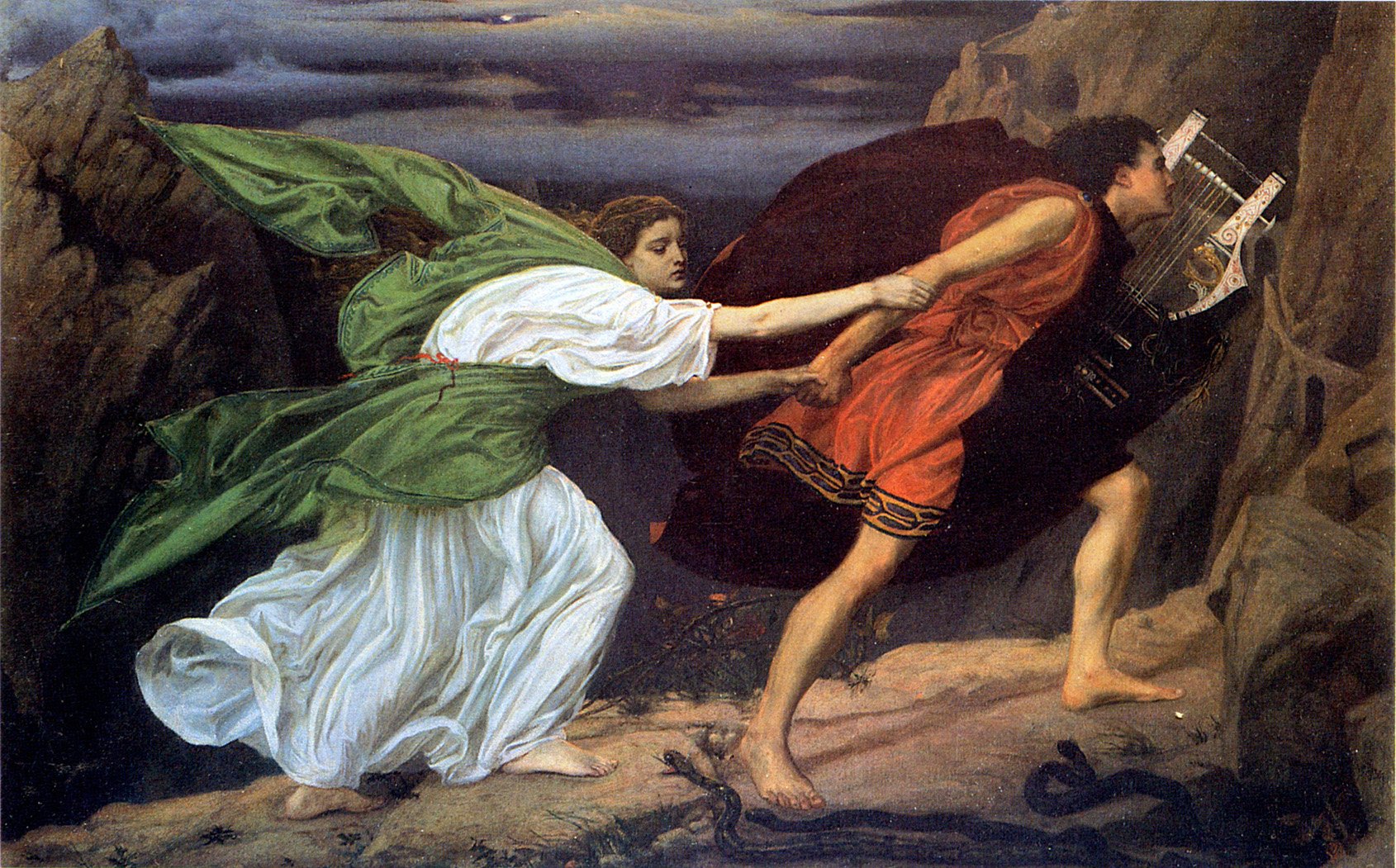









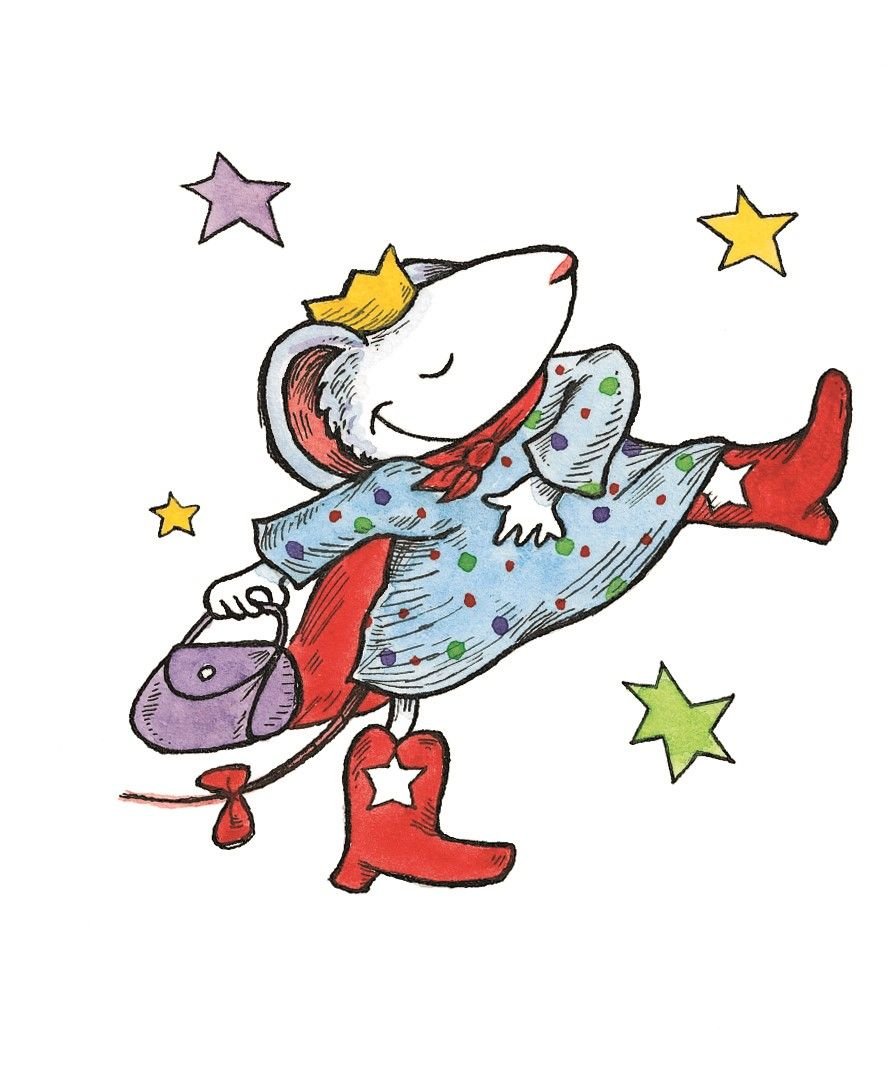












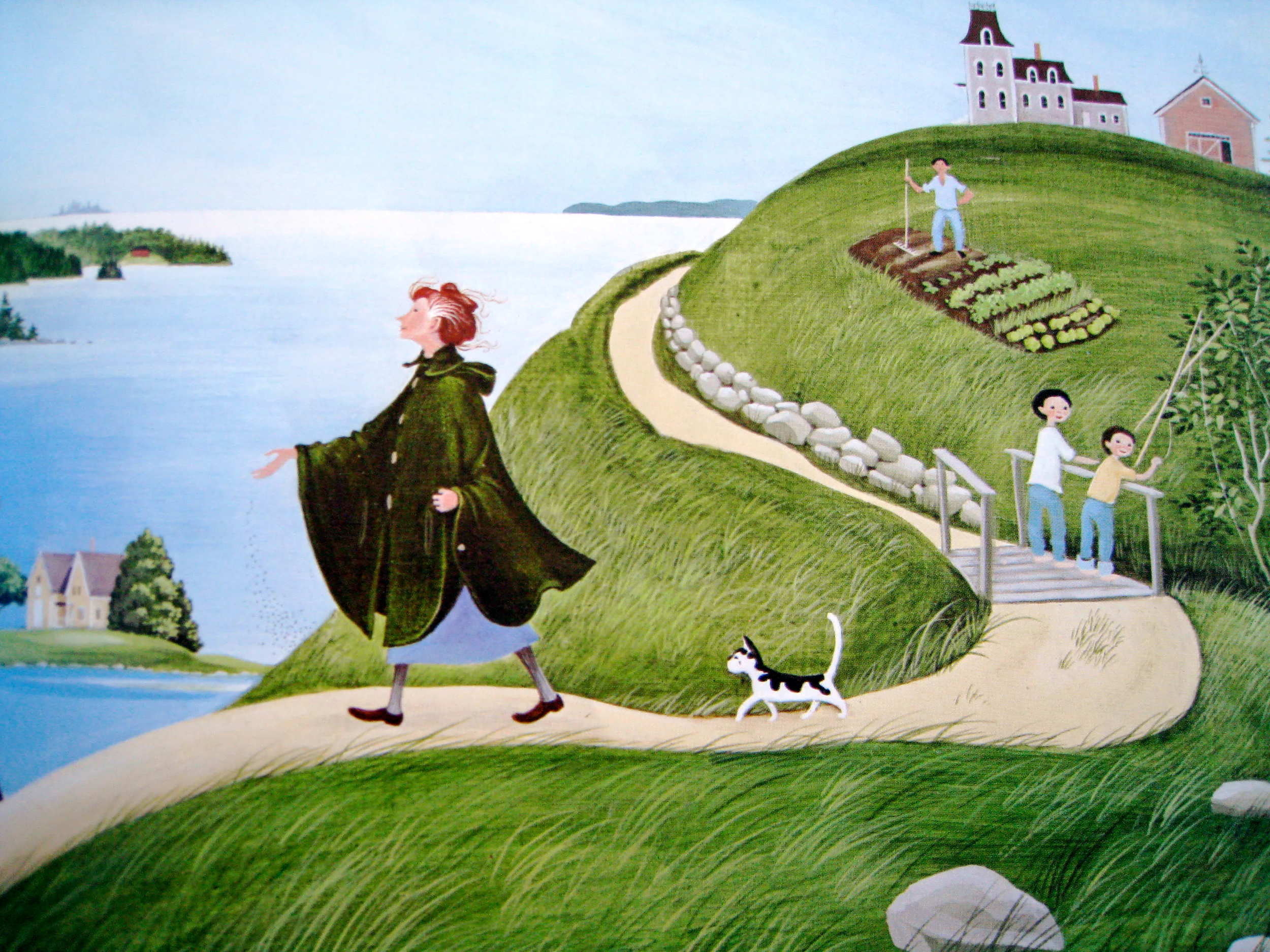












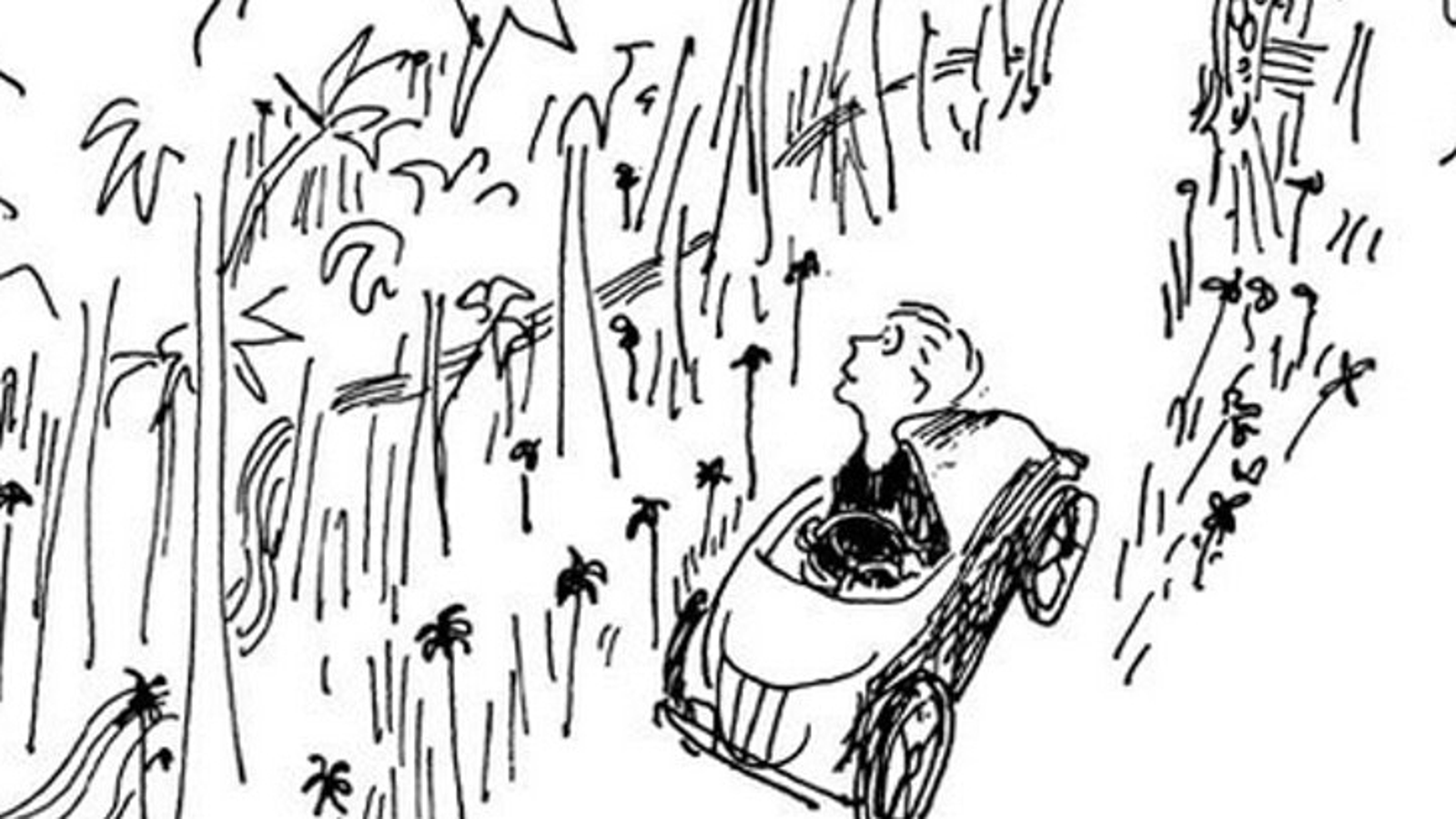




























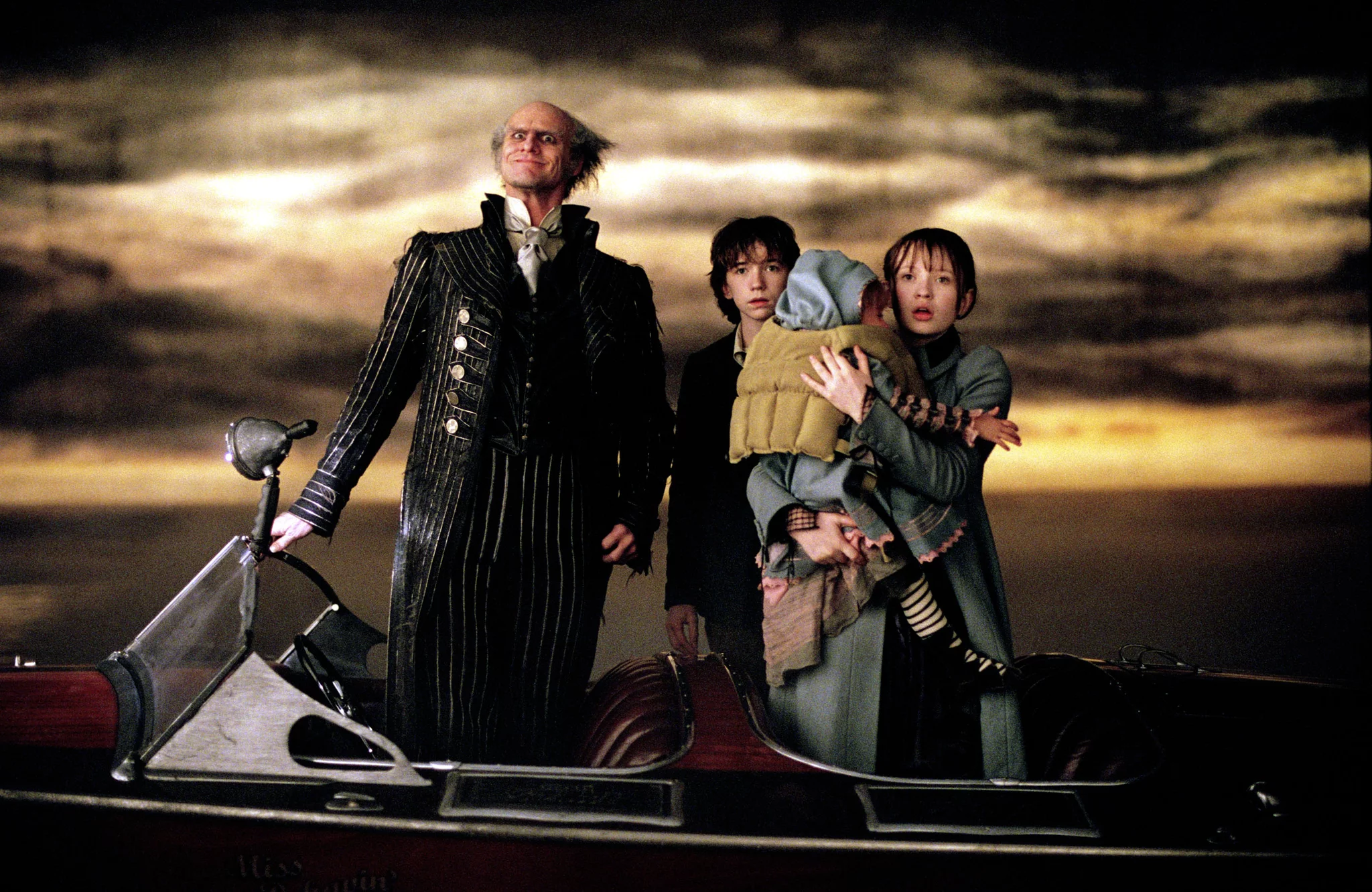































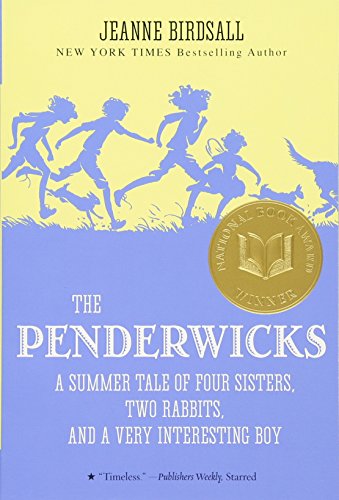






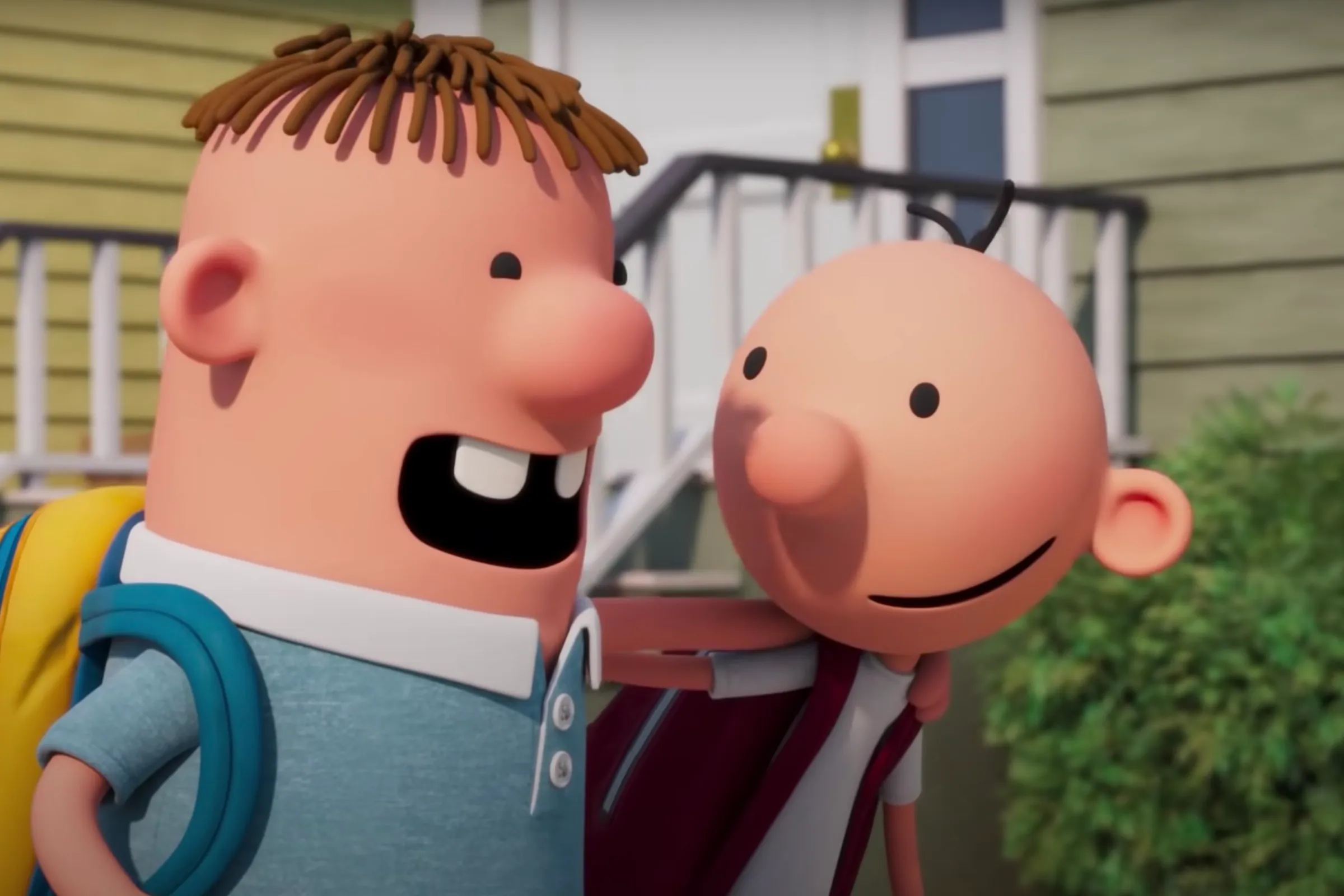






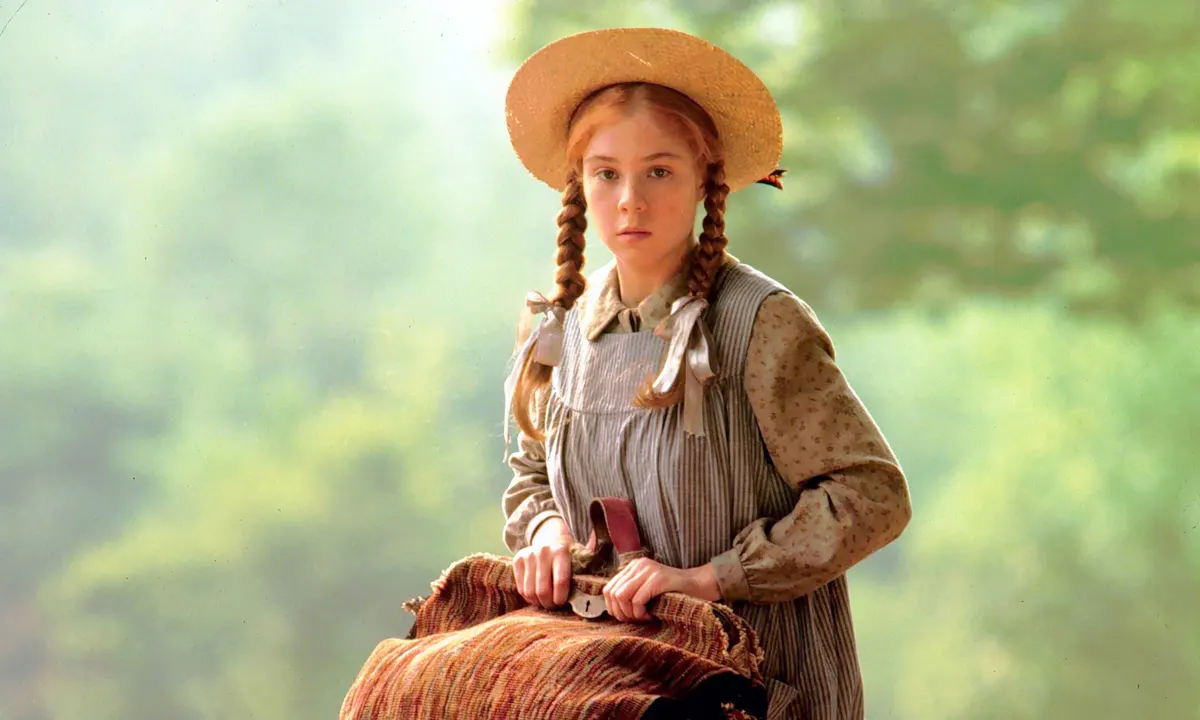
















































AMY SHARONY is the founder and editor-in-chief of home | school | life magazine. She's a pretty nice person until someone starts pluralizing things with apostrophes, but then all bets are off.